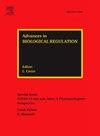Continuous fractionated irradiation with irradiation-free intervals enhances survival and clonogenicity in osteosarcoma MG-63 cells via adaptive DNA damage response
IF 2.4
Q1 Biochemistry, Genetics and Molecular Biology
引用次数: 0
Abstract
Radiotherapy is a widely used treatment modality for various types of cancer. However, the adaptive resistance of tumor cells during radiotherapy poses a major challenge to therapeutic efficacy. This study aimed to evaluate whether continuous fractionated irradiation induces radioresistance in osteosarcoma MG-63 cells compared with single-dose exposure. To assess the effects of fractionated irradiation on cell survival, MG-63 cells were subjected to either single irradiation (SR; 0, 5, or 10 Gy) or continuous fractionated irradiation (5-CFR; 0, 1, or 2 Gy per day for five consecutive days), resulting in total doses of 0, 5, or 10 Gy, respectively. Compared with SR, 5-CFR significantly increased survival and promoted the formation of larger colonies, indicating enhanced clonogenicity. We further examined the effects of additional irradiation (AR) following 5-CFR and an irradiation-free interval. Cells pretreated with 5-CFR (0, 1, or 2 Gy) were subsequently exposed to a single dose of AR (2 Gy), resulting in total doses of 0, 7, or 12 Gy, respectively. MG-63 cells that received 5-CFR + AR exhibited significantly greater survival and increased colony size compared to those treated with SR + AR. To explore the cellular response to DNA damage following 5-CFR, we analyzed γ-H2AX and 53BP1 foci formation. Both markers increased in a dose-dependent manner after 5-CFR, suggesting effective recognition and repair of DNA double-strand breaks. Collectively, these results indicate that continuous fractionated irradiation with irradiation-free intervals confers greater radioresistance to MG-63 cells by enhancing survival and clonogenicity via an adaptive DNA damage response compared with SR.
通过适应性DNA损伤反应,以无照射间隔连续分次照射提高MG-63骨肉瘤细胞的存活率和克隆原性。
放射治疗是一种广泛应用于各种类型癌症的治疗方式。然而,肿瘤细胞在放疗过程中的适应性抵抗对治疗效果构成了重大挑战。本研究旨在评估与单剂量照射相比,连续分次照射是否会诱导MG-63骨肉瘤细胞的放射抗性。为了评估分次辐照对细胞存活的影响,MG-63细胞接受单次辐照(SR; 0、5或10 Gy)或连续分次辐照(5- cfr;每天0、1或2 Gy,连续5天),总剂量分别为0、5或10 Gy。与SR相比,5-CFR显著提高了成活率,促进了更大菌落的形成,表明克隆原性增强。我们进一步研究了5-CFR和无辐照间隔后额外辐照(AR)的影响。用5-CFR(0、1或2 Gy)预处理的细胞随后暴露于单剂量AR (2 Gy),导致总剂量分别为0、7或12 Gy。与接受SR + AR治疗的MG-63细胞相比,接受5-CFR + AR治疗的细胞存活率显著提高,集落大小也增加。为了探索5-CFR后细胞对DNA损伤的反应,我们分析了γ-H2AX和53BP1灶的形成。5-CFR后,两种标记物均呈剂量依赖性增加,提示DNA双链断裂的有效识别和修复。总的来说,这些结果表明,与SR相比,无辐照间隔的连续分段辐照通过适应性DNA损伤反应提高了MG-63细胞的存活率和克隆原性,从而使MG-63细胞具有更强的辐射抗性。
本文章由计算机程序翻译,如有差异,请以英文原文为准。
求助全文
约1分钟内获得全文
求助全文
来源期刊

Advances in biological regulation
Biochemistry, Genetics and Molecular Biology-Molecular Medicine
CiteScore
8.90
自引率
0.00%
发文量
41
审稿时长
17 days
 求助内容:
求助内容: 应助结果提醒方式:
应助结果提醒方式:


